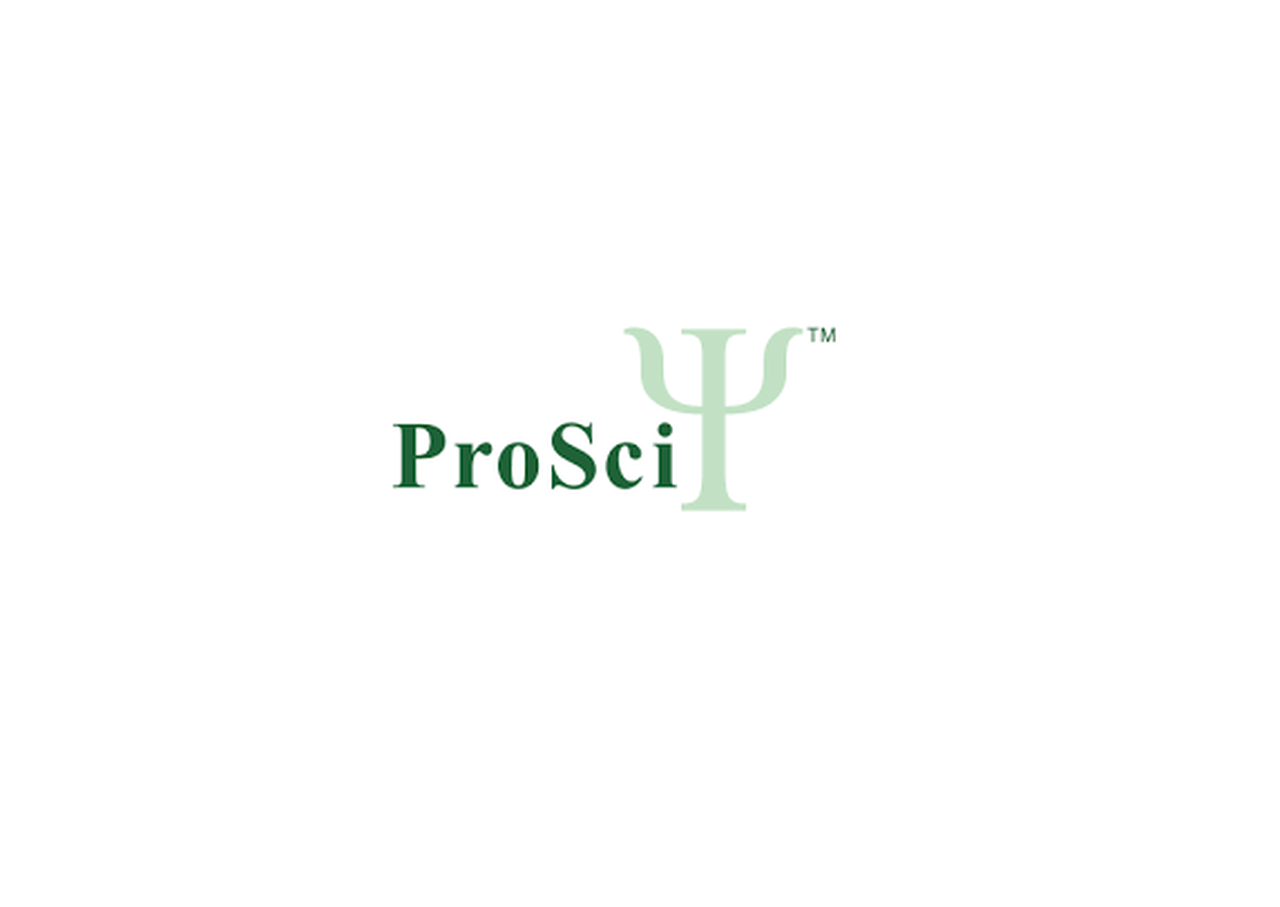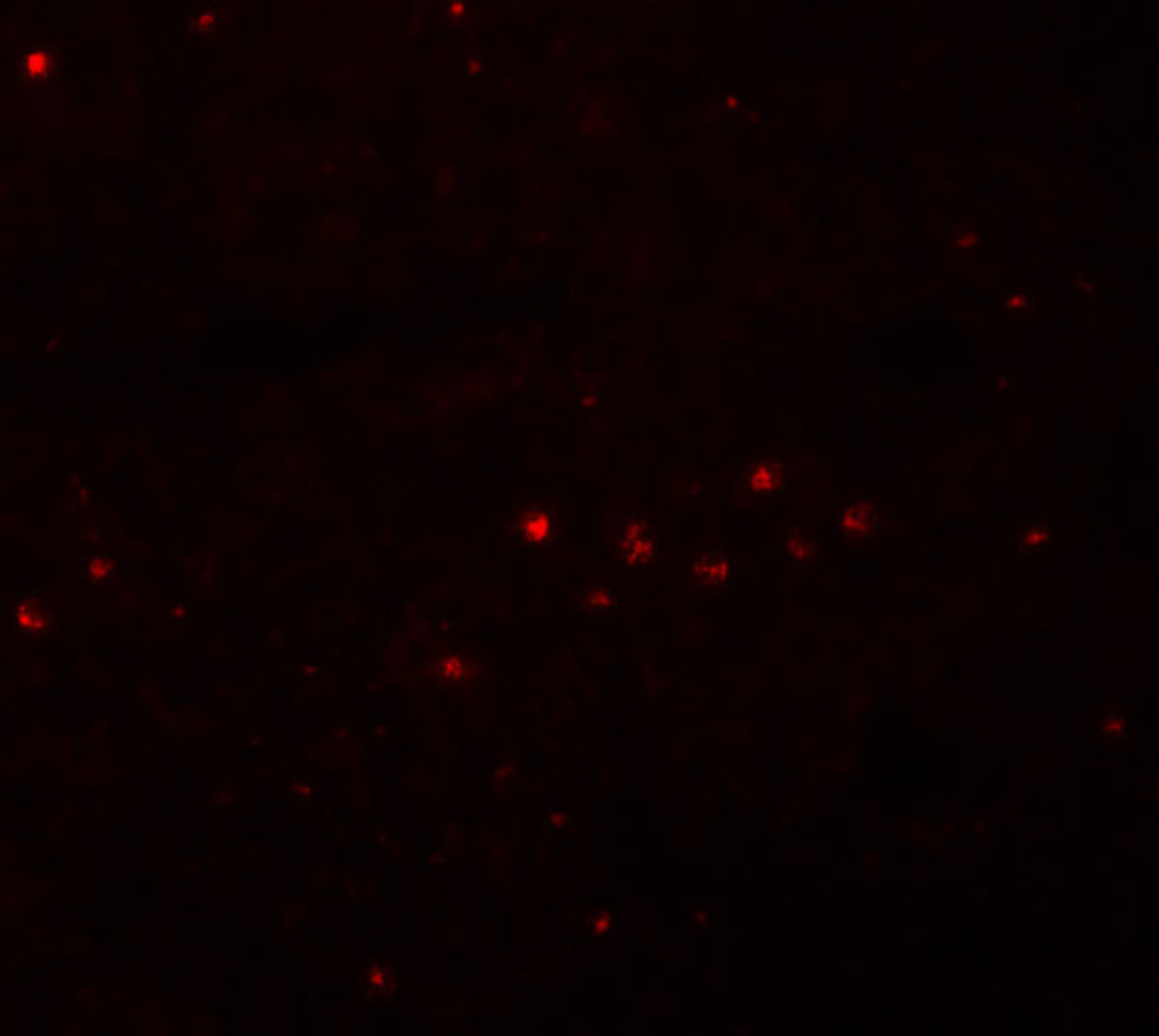Product Description
EFHD1 Antibody | 5655 | ProSci
Host: Rabbit
Reactivity: Human, Mouse, Rat
Homology: N/A
Immunogen: EFHD1 antibody was raised against a 14 amino acid synthetic peptide near the amino terminus of human EFHD1.
The immunogen is located within the first 50 amino acids of EFHD1.
Research Area: Neuroscience
Tested Application: E, WB, IF
Application: EFHD1 antibody can be used for detection of EFHD1 by Western blot at 2 - 4 μg/mL. Antibody can also be used for immunoflourescence starting at 5 μg/mL. For immunofluorescence start at 20 μg/mL.
Antibody validated: Western Blot in human samples and Immunofluorescence in rat samples. All other applications and species not yet tested.
Specificiy: N/A
Positive Control 1: Cat. No. 1306 - Human Spleen Tissue Lysate
Positive Control 2: N/A
Positive Control 3: N/A
Positive Control 4: N/A
Positive Control 5: N/A
Positive Control 6: N/A
Molecular Weight: N/A
Validation: N/A
Isoform: N/A
Purification: EFHD1 Antibody is affinity chromatography purified via peptide column.
Clonality: Polyclonal
Clone: N/A
Isotype: IgG
Conjugate: Unconjugated
Physical State: Liquid
Buffer: EFHD1 Antibody is supplied in PBS containing 0.02% sodium azide.
Concentration: 1 mg/mL
Storage Condition: EFHD1 antibody can be stored at 4˚C for three months and -20˚C, stable for up to one year. As with all antibodies care should be taken to avoid repeated freeze thaw cycles. Antibodies should not be exposed to prolonged high temperatures.
Alternate Name: EFHD1 Antibody: SWS2, MST133, PP3051, MSTP133, SWS2, EF-hand domain-containing protein D1, EF-hand domain-containing protein 1
User Note: Optimal dilutions for each application to be determined by the researcher.
BACKGROUND: EFHD1 Antibody: EFHD1, also known as Swiprosin-2 or SWS2, is an EF-hand and coiled-coil-containing adaptor protein identified in a subtractive hybridization study using a neuronal cell line established from the cerebellum of an adult p53-null mouse, however further study indicated no difference in normal mice. Its mRNA is widely expressed, with its expression in brain undetectable at embryonic stages, with increasing levels from postnatal to adult development. In situ hybridization showed expression in neurons but not white matter of the cerebellum and cerebrum. EHFD1 is also highly expressed in testes, ovary, and the collecting ducts of the kidney, suggesting that in non-neuronal cells, EFHD1 may be involved in gametogenesis and water-reabsorbtion.
 Euro
Euro
 USD
USD
 British Pound
British Pound
 NULL
NULL
















